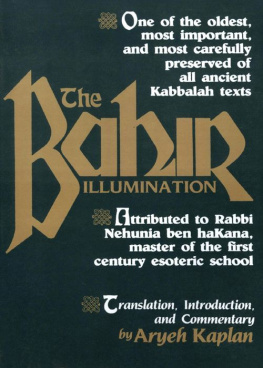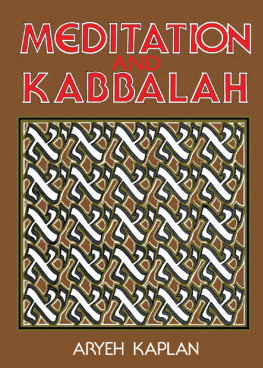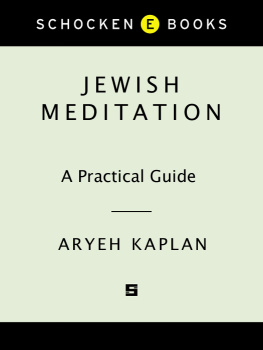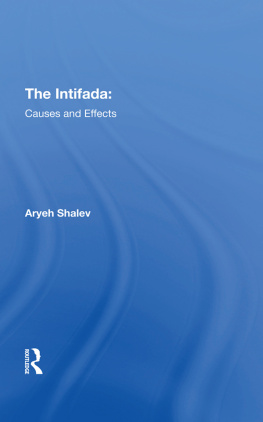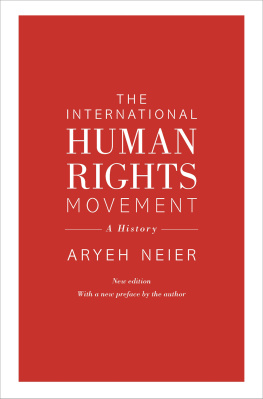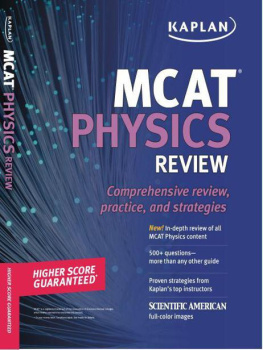Aryeh Kaplan - The Bahir: Illumination
Here you can read online Aryeh Kaplan - The Bahir: Illumination full text of the book (entire story) in english for free. Download pdf and epub, get meaning, cover and reviews about this ebook. year: 2001, publisher: Weiser Books, genre: Religion. Description of the work, (preface) as well as reviews are available. Best literature library LitArk.com created for fans of good reading and offers a wide selection of genres:
Romance novel
Science fiction
Adventure
Detective
Science
History
Home and family
Prose
Art
Politics
Computer
Non-fiction
Religion
Business
Children
Humor
Choose a favorite category and find really read worthwhile books. Enjoy immersion in the world of imagination, feel the emotions of the characters or learn something new for yourself, make an fascinating discovery.
- Book:The Bahir: Illumination
- Author:
- Publisher:Weiser Books
- Genre:
- Year:2001
- Rating:5 / 5
- Favourites:Add to favourites
- Your mark:
- 100
- 1
- 2
- 3
- 4
- 5
The Bahir: Illumination: summary, description and annotation
We offer to read an annotation, description, summary or preface (depends on what the author of the book "The Bahir: Illumination" wrote himself). If you haven't found the necessary information about the book — write in the comments, we will try to find it.
The Bahir: Illumination — read online for free the complete book (whole text) full work
Below is the text of the book, divided by pages. System saving the place of the last page read, allows you to conveniently read the book "The Bahir: Illumination" online for free, without having to search again every time where you left off. Put a bookmark, and you can go to the page where you finished reading at any time.
Font size:
Interval:
Bookmark:

First published in 1979 by
Samuel Weiser, Inc.
Box 612
York Beach, Maine 03910-0612
First paper edition, 1989
03 02 01 00
13 12 11 10 9 8 7 6
Copyright 1979 The Estate of Aryeh Kaplan
All rights reserved. No part of this book may be reproduced or transmitted in any form or by any means, electronic or mechanical, including photocopy, without permission in writing from Samuel Weiser, Inc. Reviewers may quote brief passages.
Library of Congress Catalog Card Number:
84-050348
ISBN: 978-0-87728-618-9
BJ
Printed in the United States of America
The paper used in this publication meets the minimum requirements of the American National Standard for Permanence of Paper for Printed Library Materials Z39.48-1984.
www.redwheelweiser.com
www.redwheelweiser.com/newsletter
LIST OF FIGURES
.
.
.
.
.
.
.
.
.
.
LIST OF TABLES
THE BAHIR is one of the oldest and most important of all classical Kabbalah texts. Until the publication of the Zohar, the Bahir was the most influential and widely quoted primary source of Kabbalistic teachings. It is quoted in virtually every major book on Kabbalah, the earliest being the Raavad's commentary on Sefer Yetzirah,
The name Bahir is derived from the first verse quoted in the text (Job 37:21), And now they do not see light, it is brilliant (Bahir) in the skies. It is also called the Midrash of Rabbi Nehuniah ben HaKana, particularly by Ramban. The reason might be that Rabbi Nehuniah's name is at the very beginning of the book, but most Kabbalists actually attribute the Bahir to him and his school.
Although the Bahir is a fairly small book, some 12,000 words in all, it was very highly esteemed among those who probed its mysteries. Rabbi Judah Chayit, a prominent fifteenth century Kabbalist writes, Make this book a crown for your head.
The Bahir was first published around 1176 by the Provence school of Kabbalists, and was circulated to a limited audience in manuscript form. The first printed edition appeared in Amsterdam (1651), and subsequent editions were printed in Berlin (1706), Koretz (1784), Shklav (1784) and Vilna (1883). The best edition is that recently edited by Rabbi Reuven Margolius, published in 1951 together with his commentary, Or HaBahir (Light of the Bahir). It is primarily from this edition that our translation was made.
- Amsterdam, 1651 (together with Mayin HaChakhmah), 12 pp.
- Berlin, 1706 (together with Mayin HaChakhmah), 4, 13 pp.
- Sklav, 1784, 12, 25pp.
- Koretz, 1784.
- Lvov, 1800.
- Lvov, 1830.
- No place name, 1849 (as part of Chamishah Chumshey Kabbalah), 12.
- Lvov, 1865, 32 pp.
- Vilna, 1883, 42 pp.
- Vilna, 1913, 8
- Jerusalem, 1951 (Margolies Edition), 4, 94 pp.
The earliest commentary on the Bahir was written in 1331 by Rabbi Meir ben Shalom Abi-Sahula, a disciple of Rabbi Shlomo ben Avraham Aderet (Rashba), and it was published anonymously under the title Or HaGanuz (The Concealed Light). Notes on the first part of the Bahir (up to 36) were written by Rabbi Eliahu, the Gaon of Vilna (17201797), and these are also included in the Margolius edition. Other commentaries, existing only in manuscript, were written by Rabbis Eliahu ben Eliezer of Candia, David Chavillo, and Meir Poppers.
The Bahir was translated into Latin by Flavius Mitridates in the end of the fifteenth century, but this translation is wordy and virtually unreadable. A German translation was published in 1923 by Gerhard (Gershom) Scholem. This is the first English translation of the Bahir.
Most Kabbalists ascribe the Bahir to Rabbi Nehuniah ben HaKana, a Talmudic sage of the first century, and the leading mystic of his generation. The reason seems to be that he is the sage who opens the text, as well as the fact that he was known to be the leader of a major mystical school that flourished in the Holy Land. Aside from this tradition, however, there would be little internal evidence in the text to support this attribution.
The attribution to Rabbi Nehuniah appears surprising for another reason; namely, because after the first paragraph, his name is never again mentioned in the text. An interesting possibility is that Rabbi Amorai, who plays an important role in the Bahir, is actually a pseudonym for Rabbi Nehuniah. Careful study indicates that this mysterious Rabbi Amorai, who is mentioned nine times in the text, is actually the source of the main teachings found in the Bahir. A possible reason why this pseudonym is not used in the first paragraph is discussed in the last section of this introduction.
Rabbi Amorai is particularly intriguing, since his name is found nowhere else in classical Jewish literature. All attempts to identify him have been futile, and it is assumed by many that this is a fictitious name. More probable is the assumption that this was a pseudonym assumed by Rabbi Nehuniah. The word Amorai means speakers, and would indicate that Rabbi Nehuniah was the primary spokesman for the group, the plural form being used as a sign of respect. The use of such a pseudonym would not be too surprising, since we find other examples of this in the Talmud. This hypothesis is also supported by the fact that the other sages of the Bahir speak of Rabbi Amorai with the greatest respect, and go to great length to explain his teachings.
Although Rabbi Nehuniah be HaKana is mentioned only a few times in the Talmud, these citations leave no doubt as to the important position that he occupied. As a young man he studied in the school of Rabbi Yochanan ben Zakkai, even though he was already an ordained rabbi. In one instance, Rabbi Yochanan asked his disoiples to interpret a Biblical verse, and when Rabbi Nehuniah replied, the former said that Rabbi Nehuniah's explanation was even better than his own.
Precise interpretation of the Torah was a prime quest of Rabbi Nehuniah, and it was he who taught Rabbi Ishmael (ben Elisha) how to properly interpret every word.
So careful was Rabbi Nehuniah in his teachings, that, as the Mishnah records, each day before he would begin his studies, he would pray that he not be in error.
Another picture of Rabbi Nehuniah, not found in the Talmud, is brought out in the Hekhalot Rabatai, written by his disciple, Rabbi Ishmael. This is the same Rabbi Ishmael who served as High Priest just before the destruction of the Temple, and one of his transcendental visions is described in the Talmud.
A clear picture emerges of Rabbi Nehuniah as a master of the mystical arts and teacher of his entire generation. In one place, the Hekhalot describes how he taught the correct method for projecting oneself into the supernal universes. Sitting before him as disciples were the luminaries of his time: Rabbi Shimon be Gamaliel, Eliezer the Great, Akiba, Yonatan ben Uziel, and many others.
Besides the Bahir, also attributed to Rabbi Nehuniah is the prayer Anna BaKoach. The initial letters of the words in the prayer spell out the 42 letter Name of God, which is discussed at length in mystical literature.
Although the Bahir had its origins in Rabbi Nehuniah's teachings, considerable portions are directly attributed to other sages. Rabbi Nehuniah taught the mysteries of Kabbalah to many sages of his generation, and it must be assumed that this school preserved his teachings after his death. It is to this school that we must attribute the main text of the Bahir.
Next pageFont size:
Interval:
Bookmark:
Similar books «The Bahir: Illumination»
Look at similar books to The Bahir: Illumination. We have selected literature similar in name and meaning in the hope of providing readers with more options to find new, interesting, not yet read works.
Discussion, reviews of the book The Bahir: Illumination and just readers' own opinions. Leave your comments, write what you think about the work, its meaning or the main characters. Specify what exactly you liked and what you didn't like, and why you think so.

